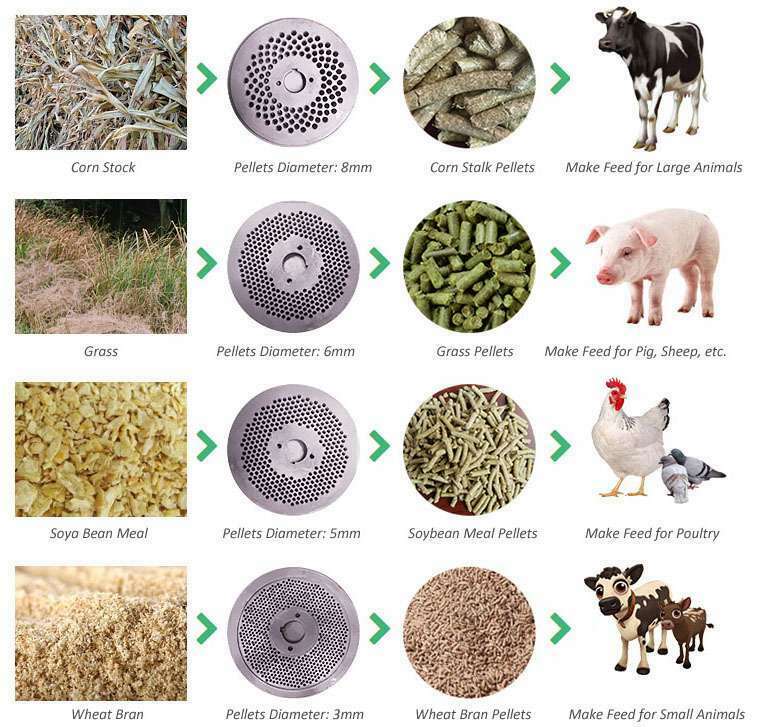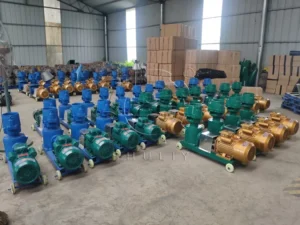Pellet feed is currently being adopted by more and more farms. This is because it is very convenient to use pellet feed to feed all kinds of livestock and poultry, and it can promote a healthier and more balanced diet for animals. Especially in cattle and sheep farms, pellet feed is an important concentrated feed.
Cattle and sheep feed classification
(1) Coarse feed
Feeds with crude fiber content greater than or equal to 18 in the dry matter are collectively referred to as roughages. Coarse fodder mainly includes four kinds of hay, straw, green fodder, and silage.
① Dry grass is wild or artificially cultivated grass or leguminous grass with a moisture content of less than 15. Such as wild hay (autumn white grass), Leymus Chinensis, ryegrass, alfalfa, and so on.
② Straw is the straw, vines, vines, seedlings, pods, shells, etc. after the crops are harvested. Such as corn stalks, rice straw, corn straw, peanut vines, sweet potato vines, potato stalks, bean pods, bean straws, etc. There are two main types of straw feed: dry and green.
③Green forage is wild or artificially cultivated gramineous or leguminous forage and crop plants with a moisture content greater than or equal to 45. Such as wild grass, green barley, green oats, green alfalfa, clover, alfalfa, and whole corn green forage.
④Ensilage is a feed made of green feed or green crop straw as raw materials, which is crushed, compacted, sealed, and fermented by lactic acid. The water content is generally 65-75, and the pH value is about 4.2. Silage with a water content of 45-55 is called low-moisture silage or semi-dry silage, with a pH of about 4.5.

(2) Concentrated feed
Feeds with a crude fiber content of less than 18 in the dry matter are collectively referred to as concentrated feeds. Concentrated feed is divided into energy feed and protein supplement. The concentrated feed with dry matter crude protein content less than 20 is called energy feed; concentrated feed with dry matter crude protein content greater than or equal to 20 is called protein supplement. Concentrated feed mainly includes three types of cereals, bran, and cakes.
①Cereals: The seeds of food crops, such as corn, sorghum, barley, oats, rice, etc., are cereals, which are generally energy feeds.
②Bran: The by-products of various grain dry processing, such as wheat bran, corn husk, sorghum bran, rice bran, etc., are bran and also belong to energy feed.
③ Cakes and meals: by-products of oilseed processing, such as soybean cake (meal), peanut cake (meal), rapeseed cake (meal), cottonseed cake (meal), cucumis cake, sunflower seed cake, corn germ cake, etc. . All of the above are protein supplements except corn germ cake which is an energy feed. Shelled cotton cakes and sunflower biscuits have a crude fiber content of more than 18, which can be classified as roughage.
Advantages of pellet concentrate
Pellet feed is a very common concentrated feed. The use of pellet feed machines to process pellet feed is beneficial to feed processing plants and cattle and sheep farms.
- The pellet feed machine is very practical for feed processing plants, and users can change the feed processing formula.
- The granular concentrated feed is small in size, convenient for packaging and storage, and is also conducive to transportation and can reduce transportation costs.
- In the process of pellet feed suppression, the structure of some substances in the feed has changed, which improves the utilization of some nutrients in the feed.
- Pellet feed can effectively reduce the infection of toxic and harmful bacteria.
- During the processing of pellet feed, trace elements, vitamins, health care agents, antioxidants and other nutrients can be added to the feed.






